When chef Isaac Toups was a boy, he would go fishing with his dad in the bayous of Louisiana. What they caught, they ate; father conjuring up a ceviche of the fresh catch by the waterside.
Toups is from Cajun country, where people have always eaten simple, hearty food such as rice, pork and chicken, shrimps, oysters and crawfish, so it was only natural that he brought those ingredients to his newly opened restaurant in New Orleans, Toups South. But, as one of a new wave of chefs in the city, he is taking tradition and experimenting, using unexpected combinations and unusual seasoning in a way that is consolidating the city’s position as one of the most original culinary centres in America. In 2015 the city was ranked fourth in the Washington Post’s 10 best food cities list – ahead of New York, Chicago and Philadelphia.
Figures published in August 2015 by Tom Fitzmorris, editor of the New Orleans Menu, showed that in the 10 years after Hurricane Katrina the number of eating increased from 800 to 1,400, despite the fact the population is still 100,000 less than in 2005.
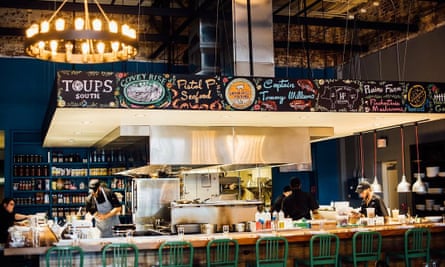
Increasingly, many young professionals are moving there from more expensive cities, such as New York and San Francisco, attracted by the cheaper property and work opportunities in tech industries, a booming medical sector and tourism, which saw more than 9.5 million visitors in 2014, a figure likely to increase in 2017 when British Airways begins direct flights from London in March and Germany’s Condor Airlines from Frankfurt in May. Many of the incomers have gentrified parts of the city that were previously considered no-go areas, defying a crime rate which has seen 156 killings this year and encouraging the growth of shops, bars and restaurants.
Toups South shares a space with the delightful Southern Food and Beverage Museum (adult $10.50, concessions $5.25, children under 12 free), which opened in 2008 in Riverside Marketplace but moved to its current home in 2014. As diners crowd in, often making a detour into the museum, drinks in hand, to examine the culinary history of the South, it is hard to imagine that this area used to be known as the Seven Mile Killer Zone.
Toups’s speciality is meat: smoked goat wrapped in tamales with green tomato relish and a padrón pepper cream ($12) and his pièce de resistance of a stack of fried pork chops skewered with a steak knife and, unexpectedly, a dab of coffee aioli ($36 for two).
Cochon, on Tchoupitoulas Street, is run by another Cajun chef, Donald Link, and was among the first to brave the Warehouse District 10 years ago, when it was still distinctly edgy. Now the area is alive with restaurants and art galleries. Cochon is a hectic place that attracts long queues but it’s worth it for the crab starter with coriander and hints of chilli ($14), or the pork with cabbage, given a surprise fillip by pickled turnips ($24). If it’s out of your price range or fully booked, the adjoining Cochon Buthcer deli/sandwich bar is a good place to try Cajun cuisine on a budget.
Take a tram to the evocative sounding, but rather run down, Elysian Fields, the setting for the Tennessee Williams play A Streetcar Named Desire, a few blocks from St Roch Market food hall on St Claude Avenue. The recently converted pristine white market is now a destination for laptop-wielding millennials taking their pick from barbecue shrimp ($7), Vietnamese-style pork belly roti ($13.50 for two) and rotisserie chickens ($11). There’s also a well-stocked bar and coffee vendor.
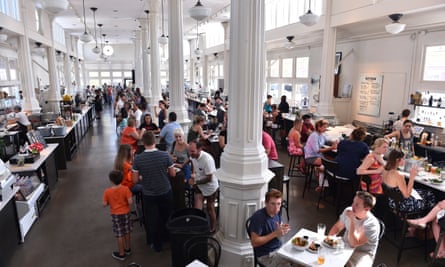
For all their tinkering with the traditional, most restaurateurs acknowledge the influences that make New Orleans food so distinctive. Liz Williams, founder of the Southern Food and Beverage Museum, explains how rice came with the slave trade, spices from the Caribbean and, above all, the skills with the French, who ruled Louisiana from 1682 to 1762. They took the shellfish and meat eaten by the indigenous tribes and elevated them into luxurious dishes that are still popular today, such as veal chop with a duck foie gras mousse and red-wine sauce. The Cajuns, who settled in the swamps of Louisiana after they were expelled by the British from their homeland in Nova Scotia in 1755, brought trapping skills. Stir in the Sicilians who came at the turn of the last century, the Vietnamese shrimpers of in the mid-1970s, and the Latinos who came to work after Katrina and that’s a real diversity of flavours.
One of the city’s signature dishes is gumbo, a simmering broth of anything from oysters to alligator meat that is served by pretty much every restaurant, smart or homely. Another is po’boy, a crusty loaf stuffed with beef and gravy or shellfish. Celebrated New Orleans chef Susan Spicer, owner of elegant French Quarter restaurant Bayona, has just opened the more casual Rosedale (no reservations) in a disused police station where she has gone for a retro menu of local classics, including cochon de lait po’boy – roasted suckling pig immersed in a rich gravy ($12).
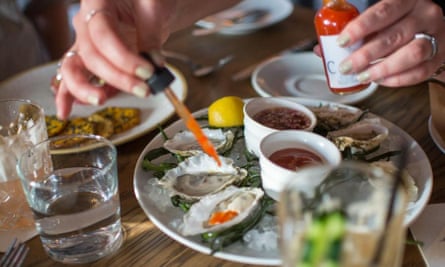
Compère Lapin, which opened last year in the cooly renovated Old No 77 Hotel and Chandlery, owes more to the traditions of the West Indies than the bayou. Chef Nina Compton is from St Lucia and cooks distinctive, Caribbean-influenced dishes such as curried goat with sweet potato gnocchi and cashew nuts ($27) and southern fried “hot-fire” chicken with a spicy red sauce, a melée of paprika, ginger and cayenne ($17).
Most of the restaurants highlighted here are away from the popular French Quarter, home to some of the oldest, and most expensive, restaurants in the city, such as Galatoire’s, Brennan’s and Antoine’s.
One traditional French Quarter restaurant worth a mention, however, is So Bou, which combines the old and the new with affordable panache. Is it possible to surpass the joy of the mini cones of yellow-fin tuna with pineapple ceviche, a hint of basil and avocado ice-cream for $8? Yes it is. The tuna tacos in a sticky orange sauce, cracklin’ (aka pork crackling), pickled radish and garlic tempered by sweet cucumber is a triumph of delicate contrasts ($13). So Bou. So new New Orleans.
FIVE OF THE BEST NEW ORLEANS RESTAURANTS
Best for brunch: Arnaud’s
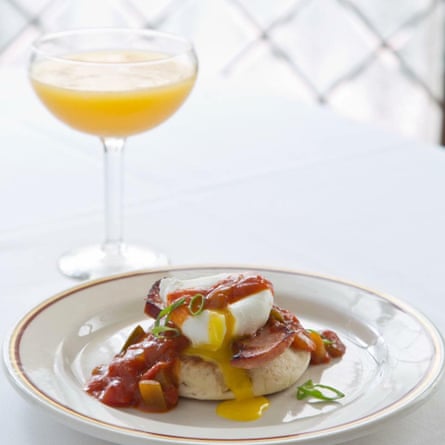
Beside the brash bars and clip joints of Bourbon Street is Arnaud’s, an oasis of elegance. The Gumbo Trio serenade the tables with jazz favourites, while diners tackle belgian waffles in pools of strawberry and blueberry compotes. Steady the jangling effect with a cocktail before embarking on eggs hussarde – eggs, bacon, french bread with a dash of Hollandaise sauce, followed by bread pudding topped with rum-soaked raisins, custard and a warm Bourbon sauce. Four-course brunch from $32.50, cocktails from $7.25.
813 Bienville Street, +1 504 523 5433, arnaudsrestaurant.com
Best for oysters: Casamento’s
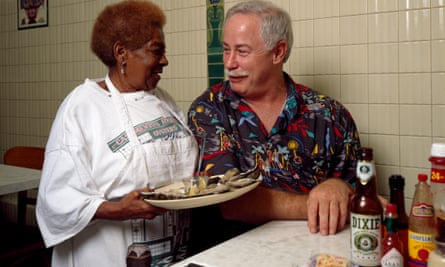
Take the tram along St Charles Avenue as far as Napoleon, walk a few blocks south and on the corner of Magazine Street is a scruffy outfit that is part of the city’s food folklore. There’s no booking: join the queue and think yourself lucky if you get to one of the somewhat unvarnished tables before closing time. Half a dozen fat, raw oysters cost $7.50. Start with a cup of oyster stew ($5.50), follow with half a loaf stuffed with fried oyster, catfish or shrimps (from $6.95). This is not good for the cholesterol levels. Walk it off by strolling down Magazine Street – several miles of independent shops and easy charm.
4330 Magazine Street, +1 504 895 9761, casamentosrestaurant.com
Best for cocktails: Old No 77 Hotel and Chandlery

The mixologist is Abigail Gullo, a performance artist with swirling shakers and rattling ice cubes for props, whose creations include Paris Between the Wars – scotch, pear cider and bitters with a dash of lemon – and the Andromeda, which mixes pisco and green chilli vodka with lime and grapefruit. While I waited, she created the Cajun Coquito, a creamy, perilously sweet concoction of cane syrup and two types of rum with a hint of nutmeg. No wonder New Orleans is known as the city that care forgot. Cocktails from $9.
535 Tchoupitoulas Street, +1 504 527 5271, old77hotel.com
Best for dinner with music: Three Muses Maple
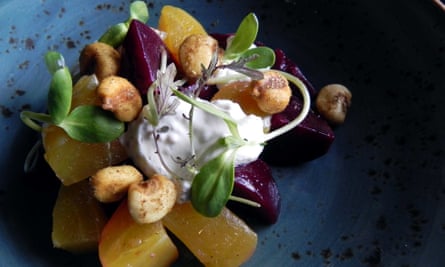
The other reason for visiting New Orleans is the music. In clubs, bars and on street corners, there’s always someone playing. The adventurous could head for Bullet’s Sports Bar at 2441 AP Tureaud Avenue, where trumpeter Kermit Ruffins and the Barbecue Swingers appear on Thursdays. He brings his own mobile barbecue so that fans can eat burgers, stand at the bar and listen to him play. More sophisticated is the Three Muses Maple, which opened in September. There has long been a Three Muses on Frenchmen Street, home to many music clubs, but this new branch on the other side of town is quieter – more piano and guitar than blazing sax – and it offers a more substantial menu, such as a hanger steak with crab cake and a béarnaise sauce ($16).
7537 Maple Street, +1 504 510 2749, threemusesmaple.com
The odd one out: Mosca’s

It’s can be annoying when people say, “You must go to …” but I’m afraid you must go to Mosca’s. It’s a 30-minute-plus drive over the Mississippi river, along highway 90, to a nondescript clapboard shack with a tin roof. Follow the fearsome aroma of garlic into a dining room as unremarkable as the exterior – brown and beige – with plastic chairs and random tables. Start with the baked oysters with the restaurant’s own Italian seasoning, covered in breadcrumbs and shrimp, drenched in white wine (the small option is enough for two: $29). It is obligatory to have the chicken à la grande, a whole chicken smothered in salt and pepper, rosemary, oregano, white wine and heaps of garlic ($28.50). When asked to name the top 10 restaurants in the world, influential US food writer Mimi Sheraton is reputed to have said: “I’ll put Mosca’s at the top and work down from there.”
4137 US-90, Westwego, +1 504 436 9942, on Facebook
Richard Holledge is author of The Scattered, the story of the British expulsion of the Cajuns from Nova Scotia in 1755

Comments (…)
Sign in or create your Guardian account to join the discussion